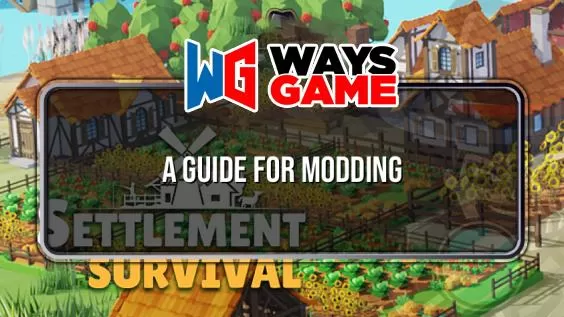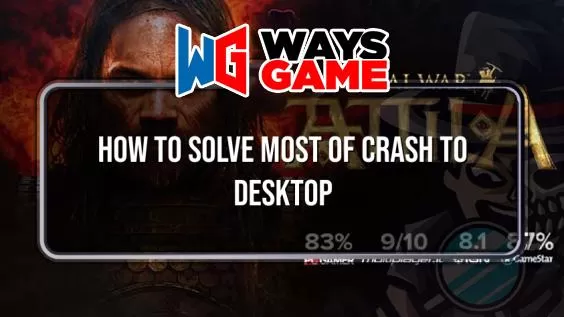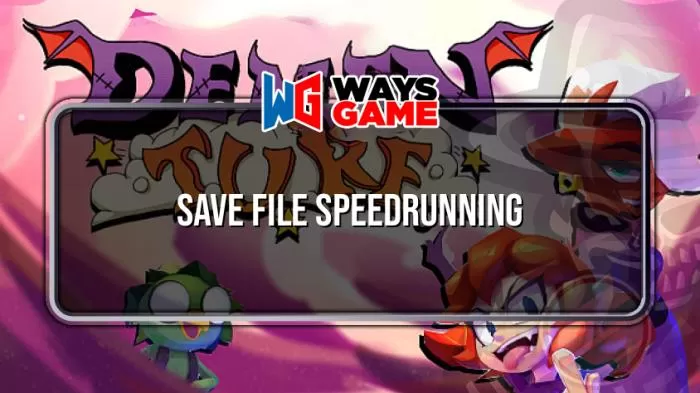This guide is a contemplation on the optimal armor stat to aim for when designing tanks in No Step Back.
Piercing – armor stat comparisons of certain typical divisions for each tech year is included, as well as some suggestions & easy tips.
Introduction
When we talk about tanks, we talk about armour. Sure, there’s the breakthrough and hardness, as well as other stats involved too; but armour is the one which causes the most dramatic impact imho.

There is no tank guide which goes in-depth about optimal armour stats as far as I’m aware. I have been focusing on this lately and have been using some calculations to achieve certain goals in my playthroughs. I hope what you read here is new to you and contributes to the enjoyment you get from the game. Happy reading!
This guide is relevant for the No Step Back expansion and uses the values as of 19 March 2022 – from verision v1.11.9e52a (3f99).
Part I – The Significance of Being Unpierced
To understand the effect of unpierced armour in combat, I check the wiki. Upon reading what’s written there, I infer the following:
When a single division with some armour is facing a single division which cannot pierce it, it deals 40% more damage (on average) to that division and takes 50% less damagefrom that division.
Suppose there are two divisions with exactly the same stats while in combat (soft attacks are the same and the attackers breakthrough equals the defenders defense).
Let’s also a*sume the attacks of both of the divisions is equal and a they have a defense/breakthrough value which doesn’t cause either sides attacks to exceed the others def/bre. Without the armour involved, they would both deal, let’s say 100 to each other and this would be an equal fight with only lady luck to determine the winner.

With armour involved though, the armoured division should now deal 140 while taking 50 damage in return.
This looks to me like armour at least doubles, if not triples the combat effectiveness of the armoured side. The armoured side could take on at least one more of the unarmoured division simultaneously and still win. When it’s three, seems like it would lose because there are three times more organization to drain on the other side now. Still, it would lose by a close margin if it did.
I guess when there are more divisions involved in either side the situation gets a little more complicated due to the coordination mechanic (whether most of the attacks target one specific division on the other side and knocks it out of combat early) and depends on whether the attacks a division sustains in a certain combat hour exceed its defense/breakthrough value or not, etc.
Anyway, tanks are tanks man. Tanks are tanks and armour is armour. Put armour on tanks. It’s awesome. Greatest idea ever. This is enough of a conclusion from this. We now move on to see how armour / piercing works.
Part II – Armour vs Piercing: How are They Calculated?
It’s good to know “how much”, under any circumstance. Armour, as well as piercing come at a cost. You wouldn’t want to be putting the products of years of hard work from your military factories on the field just to see them get pierced every time. You also wouldn’t want to add those Anti-Tank companies on all your divisions just to suffer from a lower organisation, watching them shoot at infantry and light vehicles which would otherwise be pierced anyway.
This brings us to the matter of intelligence which is necessary in every step of the question “how much”. By that I mean intel enough to figure out what our enemies or potential enemies are up to, what they are putting on the field today and what they are planning to put on the field tomorrow.
We can see some approximate numbers hovering over the counters of other countries’ divisions on the map, located adjacent to our frontline if and when they bring them over there. We can send ships or submarines to their coastline and get some info on any divisions located there, even build radars to increase the quality of this information (This is usually what I do). We can also build an intel network / use scout planes and get to a point where we see their equipment with detailed stats in their stockpile, look at their current templates, see what they are producing, what they have researched and so on.
Or we can wait until the time comes and the actual combat starts. This would actually provide the most accurate information since we would get to see the exact stats as they are in effect, in combat. It’s just that it could be more difficult to adapt at that point.
Above all else, we are a country who has access to the most invaluable of advisors: a time-traveller who lives in 2022 and knows about all the history and research progression of WW2. This person can help us as well.
Since we are dealing with armour, our enemy is piercing. We need to know our enemy first.
Let’s start with the numbers.
 Infantry Equipment
Infantry Equipment
Here we see the piercing values of infantry equipment as provided to a single brigade throughout the timeline. So a single infantry brigade with 1936 equipment (Weapons I) would have a piercing value of 4.
In 1942, there is another upgrade in addition to the Weapons III upgrade, which adds 100% piercing to infantry. The value would thereby be increased to 20 in this case. An identical research upgrade is also present in 1943 which takes it to 40 (or 30? haven’t tested this actually. no biggie at this point though).

Anti-Air and Anti-Tank
Here we have the piercing stats of Anti-Air and Anti-Tank brigades. The piercing value of anti-air brigades go unchanged whether they are added as a support company or as a line brigade. Anti-tanks on the other hand, lose some of their piercing when added as support.
The numbers above are unchanged through doctrines, generals, officer corps spirits and so on, as far as I’m aware. So these are solid numbers to safely expect at any certain point in the game. There are also piercing stats for certain armaments mountable on tanks but I will leave those out of the scope of this guide for now.
How do these numbers add up?
These numbers are the stats of a single brigade. When the brigades come together and form a division, there are certain calculations to determine how much piercing a division gets.
The calculation for the piercing stat of a division is as follows:
The Piercing of the Division
= 40% of the Piercing Value of the Highest Piercing Brigade
+ 60% of the Average Piercing of the Entire Division
Similarly with Armour:
The Armour of the Division
= 30% of the Armour Value of the Highest Armour Brigade
+ 70% of the Average Armour of the Entire Division
Note that the stat of the single highest brigade has a larger effect on the entire division when it comes to piercing, more than it has in armour.
Also keep in mind that support companies are also counted as one brigade when it comes to calculating the average just like line brigades, so the more of them without armour/piercing gets added, the lower the average of the division.
Ok, too much information already. Next, we’ll try to make sense of these info.
Part III – How Much is Needed?
Now we move on to actually put these information together.
Below table shows the piercing stats of typical divisions having relevant techs researched of given year. Then, the armour required on a single tank brigade within a division of 17 brigades to be able to pierce these divisions is given.
The 17 brigade division used for comparison is a*sumed to contain no other armoured brigade, the highest armoured brigade is the only armoured brigade in this division (an infantry template of 12 line brigades and 5 support companies for example).

Notice that the rightmost column also gives the required armour value to still go unpierced despite having lost 20% of the armoured equipment. So this may be considered a safe number.
Why?
We take into account that our division will not be fully equipped at all times. Periods where the division will need to fight under-equipped, until reinforcements arrive after combat losses and attrition effects will be a factor. If we don’t want our division to suddenly become pierced in these periods, we can go for the safe number.
Attrition has a base value of 1.2 x Attrition, even if equipment reliability is at 100%. When the number of equipment per division is low, this effect is more of a factor. So, our division with its Armored Recon company (24 light tanks) enjoying its armour, riding over the mountains on a killing spree can lose 4 tanks during this journey and get down to 20 tanks in a matter of days. This might render our remaining tanks insufficient to provide the required armour to our division anymore. So a sensible advice would be to go for the safe number especially when using a smaller number of equipment to achieve armour.
Further, take into account that the required armour will be lower the smaller your division is (less total number of brigades) and higher when it gets bigger. Reminder: The table uses values for a 17 brigade division (an infantry template of 12 line brigades and 5 support companies for example).
Next, we will try to draw some conclusions.
End note for this part: Numbers are always rounded in favour of our purposes. So, piercing values given might actually be an integer lower whereas “armour required” values are rounded up, for the sake of dependability & simplicity.
Takeaways, Suggestions
Here are some contemplations on how to reliably achieve armour against certain divisions for cheap, without overkilling it.
If our end goal is to be unpierced by infantry, then light tanks should do just fine for us in early game.
A practical way of adding light tanks and their armour to our divisions is to add Armored Recon Companies. These companies only require 24 equipment in comparison to 60 equipment a regular light tank brigade would require. However, they retain 100% of the armour, as well as the breakthrough AND the piercing values of the equipment given to them. They lose 50% of the soft attack though. Still, 40% of equipment required for 50% of the stat? Bargain.

Another way is to use flame tanks. These become available after 1939 research of Engineer Support Companies. These companies require even less equipment, only 15! However, they lose out on all stats proportionally unlike the recons. They use 25% of the equipment, so they get 25% of the stats, generally.
All in all, adding an armored recon company which uses a tank model which we have optimized for our needs, is the cheapest way to get armour right now.

Now we want to answer the question of “how much” when modelling our tank. We refer to our table from Part II and see that the safe value we are looking for is 16, up until the 1939 equipment is researched & given to the divisions we’re fighting against. Then, we would need 19.

We want a tank with at least 16 armour, ideally 19 so that it can keep enjoying it’s title “the unpierced” against infantry for a longer time. We look at our options to see that the interwar light tank has a base armour rating of only 5. We can push this tank to its limits with cast armour + sloped armour + also clicking the plus armour icon to make it 4. This way we can achieve 10, with no other tech researched. Even if we do some research, spend all our army XP on more modules (armour skirts and some more plus icons), we would still be barely over the lowest limit. Not good.
Basic light tank (1934) has 10 base armour, while improved light tank (1936) has 15.
10 is still not quite enough for our purposes but with some tweaking it can serve us.
15 though, 15 we can work with. We can even use it as is, slightly push it to 16 for safety, or 19 for longevity but it is all we need by itself. Just spend 1 army XP to strap a gun on top of it and you’re good. Spend a few more to make it better; do it cost effectively or not, you choose.
How About Enemies with Anti-Air?
That’s that. Now we ask ourselves: Can we be unpierced against divisions with AA too? Well sure we can as long as we’re willing to spend. The piercing of a 5 infantry brigade (10 width) division with an AA support is 14.5 so we need 43 to overpower that, 50 to do it safely.
This takes us to the medium tank which has 35 base armour at 1934. We can work with that and achieve 50, even without expensive modules like cast armour, probably. However, in this case we don’t have the option to add medium tanks as support companies of less equipment, unlike light tanks. This will require us to actually click on a new line in the template & spend 25 army XP and add that medium tank there. Also spend full cost for equipment (50 medium tanks for each brigade).
How About Enemies with Anti-Tank?
Now we look at what more we can do… Can we be unpierced by anti-tank divisions? Let’s check the table. Oh boy, it says we need 82 – 102 on a single tank! No worries, we have the mighty heavy TONK at our disposal, let’s take a look at it’s stats. Uhh, this has the same armour (35) as the medium in 1936! What a disappointment…
As expected, achieving unpierceability against Anti-Tanks involve more than a single tank on an infantry brigade. We would probably need expensive modules to achieve the armour we need, multiple tanks in a division, suffering from low organization as we keep adding them and so on.
Can we do it though? Sure we can. How much we need? Just use the table if a single tank brigade is involved (and see that it’s impossible for large divisions), otherwise use my spreadsheet for custom divisions which I don’t know if I can upload or reference here. We’ll see.
Thank you for reading! Hope you enjoyed & found some use for this!
Credit to Paradox employees for making this game awesome.
Credit to Feedback for his fun videos and inspiration.
Credit to BUSBY for making me actually buy this game with his enthusiasm in the Battle for the Bosporus Turkey video and getting me sucked into the abyss once again after a long time, since the times I played HOI 2 as a kid…
Here we come to an end for the Optimal Armor Stat for Tanks in No Step Back – Hearts of Iron IV guide. I hope this guide has helped you with your gameplay. If you have something to add to this guide or believe we forgot some information to add, please let us know via comment! We check each comment manually by approving them!








